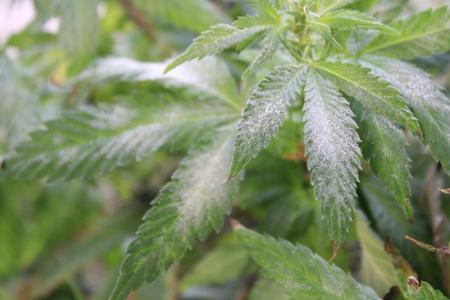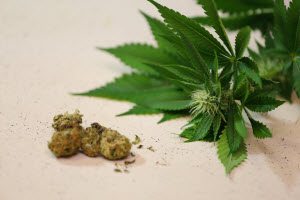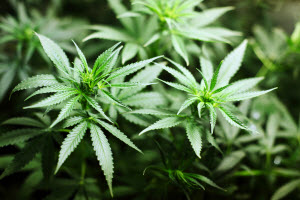
 Regulated sales of marijuana in states with legal recreational or medical marijuana represented a $5.7 billion industry in 2015. This is nearly 24% higher than the previous year, illustrating the immense growth potential for the marijuana industry. For cannabis growers, this is a promising sign for future revenue. However, there remain several threats to high yields. Cannabis disease is one of the greatest problems facing medical marijuana growers. Cannabis plants are highly susceptible to certain types of mold, and the effects of mold on cannabis can be devastating. Medical marijuana growers must be aware of the following factors to protect their financial bottom lines.
Regulated sales of marijuana in states with legal recreational or medical marijuana represented a $5.7 billion industry in 2015. This is nearly 24% higher than the previous year, illustrating the immense growth potential for the marijuana industry. For cannabis growers, this is a promising sign for future revenue. However, there remain several threats to high yields. Cannabis disease is one of the greatest problems facing medical marijuana growers. Cannabis plants are highly susceptible to certain types of mold, and the effects of mold on cannabis can be devastating. Medical marijuana growers must be aware of the following factors to protect their financial bottom lines.
1. How to spot early signs of mold.
One of the most important things a cannabis producer should know is how to spot a mold outbreak at its earliest stage. Perhaps the most common mold on cannabis is powdery mildew. This first appears as tiny, fluffy white mycelia that appear on the leaves of plants. The powdery mildew may easily brush off when you rub it, but it represents a serious threat to your plant. Other forms of cannabis mold may develop on the stem, leaves, or buds of plants. Even the roots are susceptible, where you may notice delicate tendrils surrounding the base of the plant. If you notice any signs of mold on your cannabis plants, you must take action immediately.
2. Can your cannabis plants bounce back from a mold outbreak?
Once mold has taken hold, it can be incredibly difficult for plants to bounce back. The most encouraging scenario is one in which early signs of mold are discovered on just one or two plants in a growing environment. In this situation, it is imperative to immediately isolate the plants to prevent the spread of disease. Prophylactically spraying other plants can ensure that the remainder of your harvest is untouched.
Unfortunately, the effects of mold on cannabis can be devastating for harvested plants. Many marijuana growers are unaware that plants in the processing and drying phases can be contaminated by disease. Workers harvesting plants may inadvertently spread mold spores, leading to crop contamination. For drying cannabis, the presence of mold can ruin an entire harvest. Cannabis mold may be harmful to ingest, meaning that the resulting cannabis is unsuitable for smoking or marijuana edibles.
3. How to treat the effects of mold on cannabis plants.
Once mold has been discovered, you must act quickly to treat its effects before the plant succumbs. There are several techniques that can be helpful to treat mold on cannabis plants. For instance, numerous commercial fungicides are available, many of which are commonly employed in other agricultural industries. The long-term effects of these fungicides on human health and well-being are unknown. Thus, although use of these fungicides may be a good way to prevent the negative effects of mold on cannabis plants, they may also reduce the attractiveness of your products to buyers.
A natural and organic way to treat mold on cannabis plants is to make your own sprays. Mold spores thrives in a damp, slightly acidic environment. Thus, creating an alkaline solution can kill the existing spores on plants and prevent new ones from taking hold. One simple way to do this is to mix several spoonfuls of sodium bicarbonate or potassium bicarbonate into a jug of water. Spraying this solution on plants may inhibit the growth of mold.
4. Prevention of mold on cannabis plants.
Perhaps the most effective way of ameliorating the effects of mold on cannabis is to prevent it from taking hold in the first place. The best way to accomplish this is to invest in an air purification system. Unlike preventative plant sprays, which cannot always control the spread of spores, an air purification system such as AiroClean420 is demonstrated to eliminate 99.9% of airborne pathogenic threats.
It is important to note that AiroClean420 is not a filter, meaning that it does not simply trap spores within its system. Instead, AiroClean420 features a Developed for NASA photocatalytic reactor that kills any living pathogens that enter its chamber. This means that your air will be free of mold spores, bacteria, viruses, and other fungi. Contact AiroClean420 today to learn how we can fit our product into your cannabis production environment. AiroClean420 works 24/7 to keep your product safe from the devastating effects of mold on cannabis.
Ready to Stop Powdery Mildew?
Fill out a simple form to get pricing for AiroClean420.




